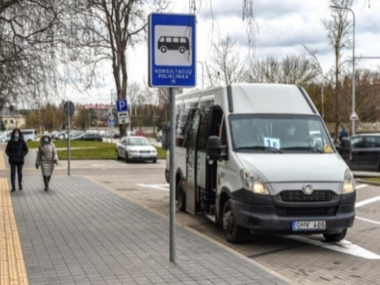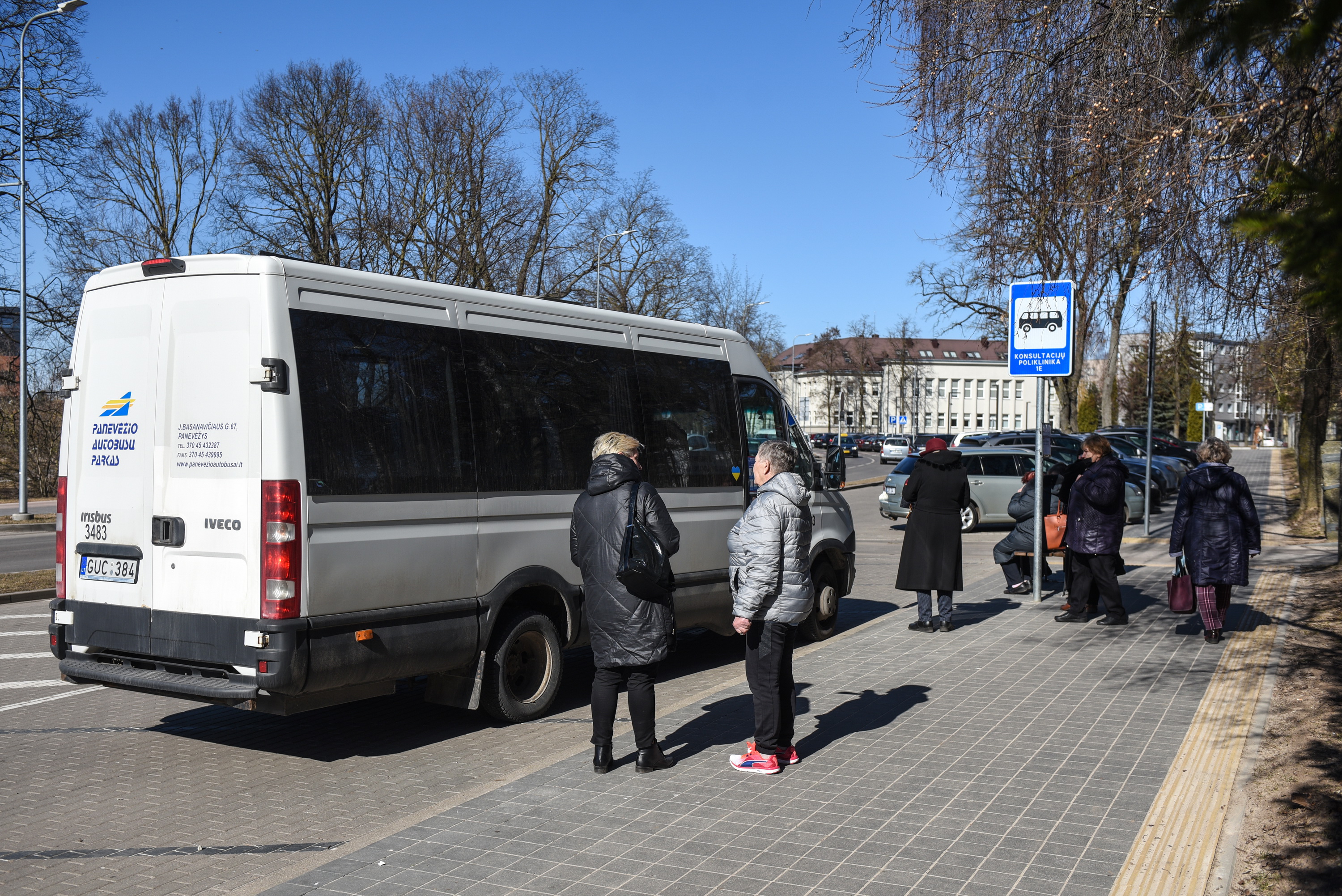About building bridges - the case of Panevėžys
Edited on
28 June 2022Panevėžys city structure sees to the largest part a divide between residential areas and areas for work, local economy and leisure. Consequently, traffic volumes between these areas are high and done for more than half of all trips by car. Often enough the built environment is not equipped for this level of car traffic. Residential areas see car parking misusing public space of any kind. Traffic destinations outside of regulated parking areas meet similar situations, too. Areas neighbouring the parking management zone in the very centre face an additional load of motorists who avoid the paid parking zone in the centre.

Challenges
The city of Panevėžys is improving public space following its Integrated Territories Development Programme: such as the Laisves square at the town hall and the local, regional and international bus station in the very centre. Or the greenspace renovations around the city river. Or the culture events and activities connected to give life to streets during construction phases. Sustainable mobility takes a cental role for improving the management and quality of public spaces.
During the first phase of the network, the main challenges of the city were identified: the management of parking spaces at the expense of public spaces, the flow of cars through the city center, and how to ensure the mobility of residents between densely populated areas and the city center. A specific challenge is that people living in urban residential areas face limited parking spaces and poor parking management. Solutions to improve the quality of a network of footpaths alongside parking management in residential areas are defined in the Sustainable Mobility Plan of Panevėžys, but this challenge has not been solved so far.
Objectives
The aim of this integrated action plan is to reduce the misuse of public space and ensure the high quality of public space for pedestrians and cyclists by promoting better mobility for the population and tackling the challenges of intensive transport through the city centre.
The main objectives are to
- reduce the disuse of open space and motor vehicle domination to ensure a good quality of open space and
- improve and promote citizen mobility via alternative modes of movement to reduce motor vehicle traffic through city centre
In action
The city of Panevėžys implemented a small-scale pilot project which contributed to the main goal of reducing the misuse of public space and ensuring the quality of public space for pedestrians and cyclists, promoting better mobility and addressing the challenges of intensive transport through the city centre. The pilot centred on installing the city's bus traffic route - No.1E “Kniaudiškių str. - "Consultation polyclinic" with April 2021. The aim of this initiative was to improve the connection and mobility between the western part of the city and the treatment services complex of Panevėžys City Consultation Polyclinic and Panevėžys City Hospital.

A survey done to evaluate necessity and acceptance of the piloted bus service tells that more than 200 passengers make use of it each day. Users of the bus line 1E were a mix of staff and visitors to the hospital. Most survey respondents (94%) see a definite necessity for the service and about every 3 out of 4 persons think that such services impact people’s intention to use public transport more often positively. Further recommendations were to make use of low- or no-emitting vehicles, to increase the frequency of the service running on bus line 1E and to add similar services to parts of the town with main traffic destinations should be tested as well.
The tested measure stayed in place and forms part of the IAP; added by further similar connetions. The IAP answers to the two main objectives by:
Actions of objective no. 1 - Reduce motor vehicles domination in an open space to ensure a high-quality public realm:
- Close the Elektros street for pedestrians and cyclists from Friday to Sunday
- Organize a series of open lectures on urban planning and public spaces for residents and decision makers
- Organize architectural and public space festival
- Organize trips or visits of pupils and students to construction sites in the city
- More streets that prioritize pedestrians and cyclists
- Apply the principle of "tactical" urbanism in implementing the ideas of public spaces of the population
- Carry out a comprehensive impact assessment of renewed public space investment projects, identifying the strongest and weakest sides from a consumer (residents) perspective
Actions of objective no. 2 - Improve and promote citizen mobility via alternative modes of movement to reduce motor vehicle traffic through city center:
- Day without a ticket in public transport
- E-ticketing for public transport
- Pedestrian and bicycle path from Vakarinės st. towards the modernization of Berčiūnai settlement
- Organize the "Day - without your car" initiative
- Vehicle sharing platform for car pooling and ride sharing
- A pilot bicycle storage in Klaipėda’s district
- Cheap public transport ticket for students
Conclusions
When planning possible activities, the key tasks are to identify the needs of the parties involved, plan the budget and draw up an action plan. A smooth development process relies on communities’ involvement and dialogue between institutions and society at large. The city and its benefits services are mainly used by the citizens of the city, therefore they tend to know and feel what is best for the city, because they live there. The aim is to ensure that all residents have a representative voice in planning process. The main solutions are targeted at the urban population recreation, leisure, not only in the central part of the city, but in residential areas. The aim is to ensure good accessibility to social services, links between spaces, functional diversity and communities activity. Developing a compact city with mobility and good accessibility to jobs. In the future, the use of tactical urbanism techniques integrated into information systems could be expanded exploiting its focus on activities of citizens (tacticians), addressed to the broader urban community, to improve the living conditions in the city. Tactical urbanism could be used not only to design spaces for people but also to implement health programme projects.
Lessons learnt and transferablility
Communication with local community, authorities, stakeholders is essential. Successful communication is not only about disseminating knowledge, but also about gathering and evaluating feedback. Citizens need to be informed not only about completed processes, but also about their start. Sharing good practices and disseminating the city's achievements can have a positive impact on the image of the city. The best way to test an idea is to put it into practice. Examples from other (partner) cities demonstrate the benefits of small scale projects for society. Convincing through action is the benefit of pilot projects.
Submitted by Claus Kollinger on
